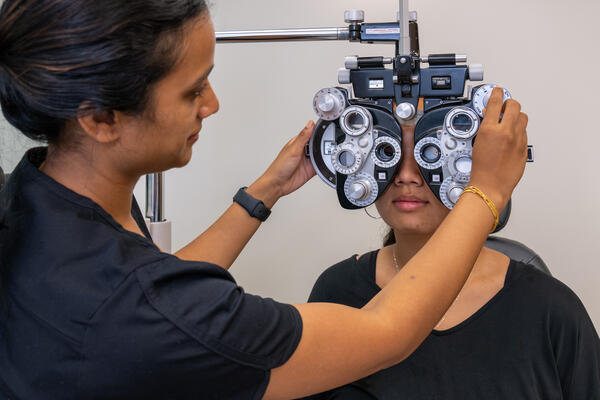Andalusia Eye Facility: Premier Services for Vision Modification
Andalusia Eye Facility: Premier Services for Vision Modification
Blog Article
The Benefits And Drawbacks of Different Refractive Surgeries for Enhanced Eyecare

LASIK Surgery
LASIK surgical treatment is a generally executed refractive procedure that intends to deal with vision concerns such as nearsightedness, astigmatism, and farsightedness. Throughout the treatment, a slim flap is produced on the cornea, and a laser is used to reshape the underlying tissue, remedying the refractive mistake.
One of the main advantages of LASIK surgery is the rapid renovation in vision experienced by numerous people. It is important for individuals taking into consideration LASIK surgery to undergo a complete evaluation by an eye treatment specialist to identify if they are suitable candidates for the treatment.
PRK Procedure
The PRK treatment, additionally recognized as Photorefractive Keratectomy, is a type of refractive surgical procedure that aims to deal with vision concerns comparable to LASIK surgery. Unlike LASIK, which entails developing a flap in the cornea, PRK functions on the surface layer of the cornea.
One of the benefits of PRK over LASIK is that it eliminates the threat of flap-related difficulties since no flap is created throughout the surgical treatment. This can be useful for individuals with thin corneas or those associated with contact sporting activities where eye injury is a possibility. The healing time for PRK is normally longer compared to LASIK, as the external layer of the cornea needs time to regenerate after the treatment. In spite of the longer recovery duration, PRK can be an appropriate choice for individuals looking for vision modification surgery.
SMILE Surgical Treatment
An innovative refractive surgical treatment strategy acquiring popularity in the field of ophthalmology is SMILE Surgery. Tiny Incision Lenticule Removal (SMILE) is a minimally invasive treatment that fixes vision by improving the cornea utilizing a femtosecond laser. Unlike conventional LASIK surgery, SMILE Surgical procedure includes developing a small cut in the cornea to extract a lenticule, which leads to much less disruption to the corneal framework and possibly faster healing times.
Among the primary benefits of SMILE Surgical procedure is its ability to deal with nearsightedness (nearsightedness) and astigmatism with high precision, bring about excellent aesthetic end results for clients. The minimally intrusive nature of the procedure likewise minimizes the risk of issues such as completely dry eye syndrome, making it a positive option for people seeking refractive surgical procedure.

LASEK Technique
Having discovered the advantages and factors to consider of SMILE Surgical procedure, an additional notable refractive surgical treatment technique worth analyzing is the LASEK Method. LASEK, which stands for Laser-Assisted Subepithelial Keratectomy, is a form of laser eye surgery that aims visit homepage to remedy refractive errors such as nearsightedness (nearsightedness), hyperopia (farsightedness), and astigmatism.
Unlike LASIK, LASEK does not involve producing a corneal flap. Rather, throughout a LASEK procedure, the surgeon uses a watered down alcohol option to loosen up the thin external layer of the cornea, recognized as the epithelium.
One of the primary advantages of LASEK is that it can be appropriate for people with thin corneas who may not be great candidates for LASIK. Furthermore, LASEK usually results in marginal post-operative discomfort and a quicker recuperation time compared to PRK. Nevertheless, the visual healing process with LASEK might be somewhat longer than with LASIK.
Implantable Call Lenses
Implantable Contact Lenses supply a long-lasting vision adjustment remedy for individuals looking for an option pop over to this site to traditional contact lenses or glasses. These lenses, also called phakic intraocular lenses, are surgically put into the eye to remedy refractive mistakes such as myopia (nearsightedness), hyperopia (farsightedness), and astigmatism. neurologist Andalusia. Unlike standard call lenses that rest on the surface area of the eye, implantable contact lenses work within the eye itself, providing clear vision without the demand for daily maintenance or elimination
Among the essential advantages of implantable call lenses is their permanence. When inserted, they can stay in the eye indefinitely, offering regular and stable vision improvement. In addition, these lenses can be an exceptional option for people that are not excellent prospects for laser eye surgery or who favor a reversible vision modification treatment.
However, implantable get in touch with lenses do lug some dangers, consisting of the capacity for cataracts or increased eye pressure. It is important for people considering this choice to seek advice from an eye treatment specialist to establish if implantable get in touch with lenses are the best option for their particular needs and eye wellness.
Final Thought
Finally, each sort of refractive surgery has its very own benefits and disadvantages. LASIK surgery is popular for its quick recovery time, while PRK procedure may appropriate for patients with thin corneas. SMILE surgical treatment supplies minimal pain throughout the treatment, however LASEK method may have a longer recovery procedure. Implantable get in touch with lenses supply an option for those who are not suitable prospects for traditional surgical treatments. Clients ought to seek advice from news their eye treatment provider to determine the very best option for their individual requirements.

In General, SMILE Surgical procedure provides an encouraging choice for people looking to boost their vision with refractive surgical procedure.
Report this page